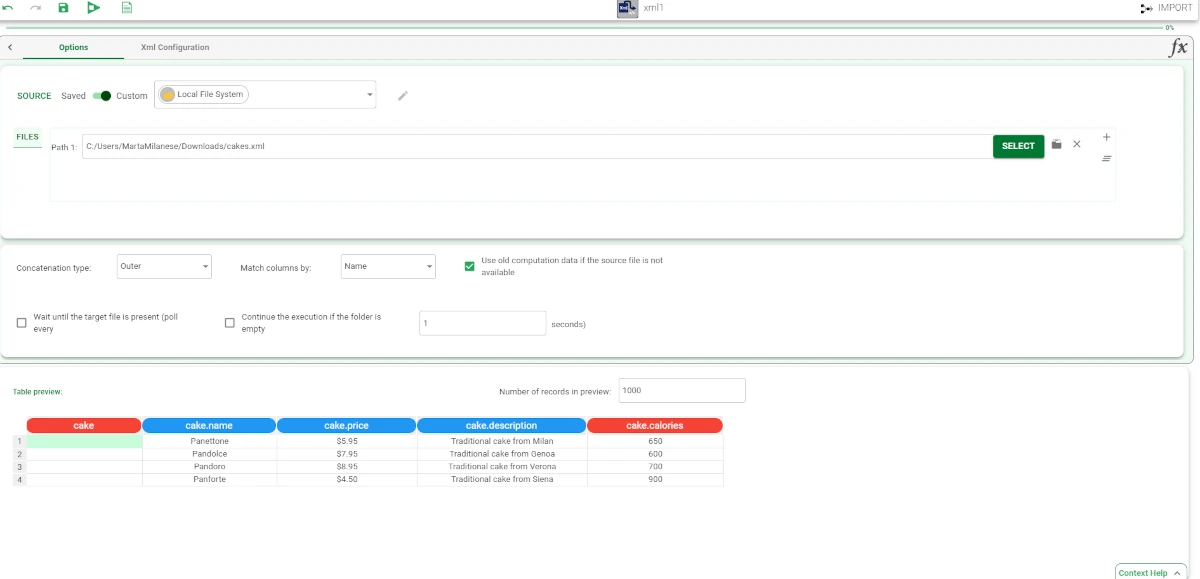Import from XML File¶
The Import from XML File allows users to import data directly from XML files, specifying the data sheets.
The Import from XML File task is divided into two tabs:
the Options tab
The Options tab¶
The Options tab follows the structure shown in the Import Overview page.
The Xml Configuration tab¶
The Xml Configuration tab is divided into three panes:
Parsing options: users can find the parsing options.
Import options: users can find the import options.
Table preview: users can visualize a preview of their imported tables.
Parsing options
Within this pane, users can set and configure the following options:
Number separators: users can define symbols to mark thousands and decimals in numbers. You can select the symbols from the Thousands and Decimals drop-down lists.
Missing string: users can enter the string to remove from the dataset.
Key for types: users can specify the string to be used to identify the type.
Import options
Within this pane, users can find and set the following options:
Remove the most external tag when importing dataset: if selected, the most external tag is removed from the imported file.
Remove empty rows: if selected, it removes empty rows from the imported dataset.
Add group columns: If selected, it adds an extra column containing the group id or file structure.
Remove empty columns: if selected, it removes empty columns from the imported dataset.
Add an attribute containing filename: if selected, it adds an extra column with the name of the file to the dataset.
Strip spaces: if selected, it removes the empty columns from the imported dataset. For example, the string “ class “ will be imported as “class”.
Case sensitive:if selected, upper cases are considered different from lower cases.
Compress white spaces: if selected, it compresses contiguous occurrences of white spaces in one single occurrence. For example the string “university program” would be imported as “university program”.
Save response header: available in the Import from JSON File and in the Import from XML File tasks when importing from a Http Server, allows to save the response’s headers, by adding two extra columns to the dataset: one containing the headers’ names, and another one containing the headers’ values, so that each row contains the header name and its corresponding value.
Turn off smart type recognition: if selected, prevents automatic recognition of data types. This option is useful when manual identification is preferable, for example when there is the risk of a code being misinterpreted as a date.
Example¶
Drag an Import from XML File task onto the stage.
Double-click to open the task.
Move the Source slider to Custom.
Select Local File System from the drop-down menu.
Click Select and browse to the file you want to import.
Configure, if needed, the options in the Xml Configuration tab as explained above.
Save and compute the task.
Click the Load Preview button to visualize a preview of the imported file in the Table preview pane.
According to the selected file, your Import from XML File task should look like the example provided below.
